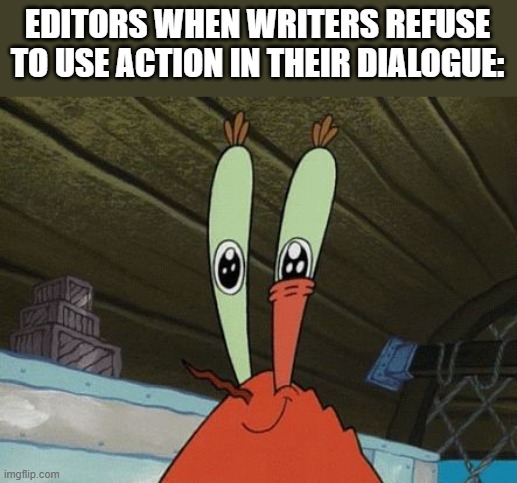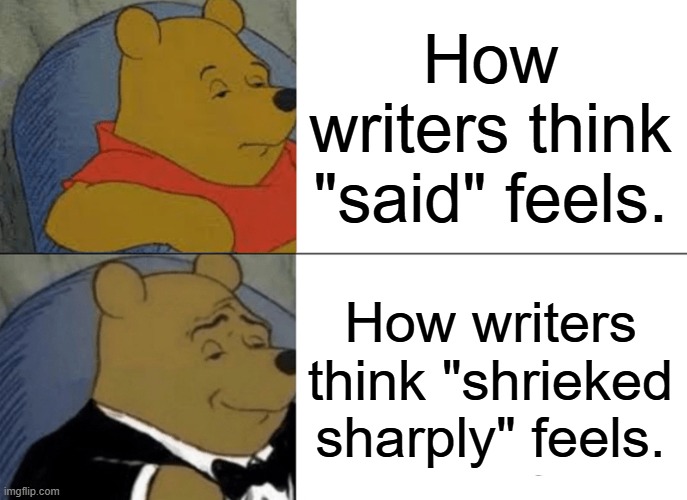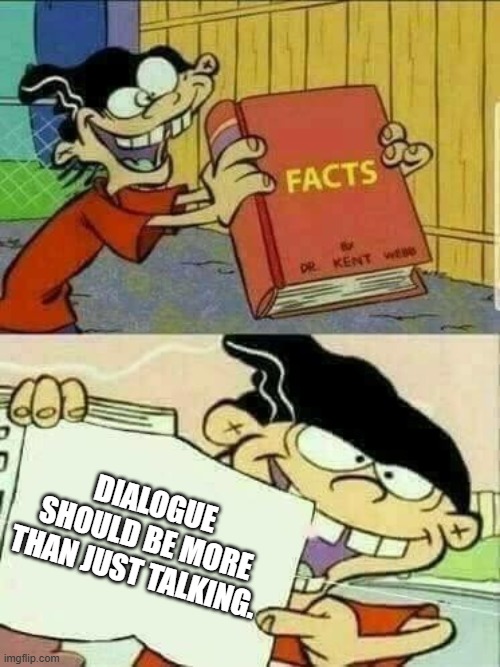In all the story drafts I have read, misused dialogue has been the most apparent issue. Unfortunately, writers often believe that dialogue is simply characters speaking back and forth. They write scenes filled with “talking heads,” where one character speaks, another character speaks, and nothing else happens.

The Problem with Talking Heads
But what’s so wrong with back-and-forth dialogue? Well, it disconnects readers from the story and the characters. They feel like they’re listening to a phone call between two robots. Characters become hollow, never showing emotion or having reactions.

I sometimes refer to these types of scenes as “script-esque,” but even that is an oversimplification. Real scripts contain action and stage directions.
Jessica walks into the table, wincing as the wood corner rams into her knee.
JESSICA:
Ouch! Who put that table there?
Charlie glances up and gives Jessica a small grin.
CHARLIE:
You did, remember?
But a talking head scene would look like this:
“Ouch! Who put that table there?” Jessica said.
“You did, remember?” Charlie said.
Do you see how the talking head scene has no intrigue to it? The characters don’t have emotions or reactions. In other words, it’s boring. Bored readers will find a different book.
Cheryl St. John’s Method
In her book Writing with Emotion, Tension, and Conflict, Cheryl St. John adapts an old dialogue method. She advocates for the use of a four-step pattern to keep dialogue interesting and engaging. According to her, dialogue scenes should include motivation, feeling, action, and then speech.

First, your characters need something that motivates them to speak. In my screenplay example, Jessica is motivated by injuring her knee. Next, the motivation should elicit some kind of emotion from your character, and they will react to that emotion with an action. Jessica reacts to her pain by wincing. Finally, the character should speak their line. With these steps, dialogue not only feels earned, but it becomes engaging. We could use this exact pattern to enhance our talking heads example.
Seeing Charlie across the room, Jessica scowled. What was he doing there? She clicked her tongue and marched towards Charlie’s table.
Just before she reached him, prepared to scold him for all he’d done, she knocked her leg into the corner of the table. She winced, pulling back. “Ouch! Who put that table there?”
Charlie looked up from his newspaper with a smirk on his face. “You did, remember?”
Utilizing Action
Action is its own tool, separate from the rest of St. John’s technique. Even if authors choose to ignore motivation or feeling for parts of their story, almost all dialogue needs action. Characters move as they speak, even if it’s just through facial expressions. Don’t believe me? Watch a scene from any movie or television show. I guarantee you’ll catch the characters making facial expressions or moving around. If movies need these moments, why wouldn’t books?

Writers can also use action instead of a dialogue tag, which you can see in my revised example. Readers know Jessica is the one who says “ouch” because she winces right beforehand.
Carefully Placing Dialogue Tags
Amateur authors often color their dialogue by adding detailed tags.
“Ouch!” Jessica shrieked sharply. “Who put that table there?”
Although these tags may be fun to write, they often annoy readers. They border on the line of “telling,” and don’t do much to color the dialogue effectively. Good dialogue speaks for itself, and a carefully placed action can create emotions as well. There’s no need for an author to pair complex tags with adverbs. Most of the time, words like “said” and “asked” will do the trick.

Practice Makes Perfect
There are so many other methods writers can use to improve their dialogue, and they aren’t always easy. Writers will sometimes choose to stick with their regular talking heads scenes because they’re simpler. For a rough draft, this is perfectly fine. When editing, however, writers should at least attempt to improve their dialogue with action, emotion, and motivation. The more often they practice these skills, the better their dialogue will become.


View comments
+ Leave a comment